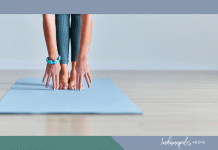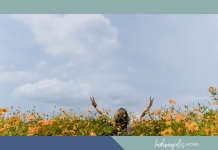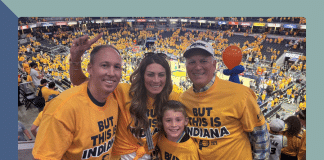 Children’s Eye Health and Safety Month has special meaning to both my first daughter and me. When she was born, she seemed perfect to me. In fact, there was no doubt in my mind, and I could hardly believe I helped make someone so beautiful. As the months passed, though, I started to have a nagging feeling when I looked at her beautiful face. Something just wasn’t quite right with her eyes. For a long time, I ignored it, assuming it was just me being super detail-oriented and spending a ridiculous amount of time looking at her face. But then another person mentioned it…and another. I would sit after bedtime and swipe through pictures of her, but instead of just admiring her or missing her like lots of moms do in the evening, I was studying her: different angles, different lights, different times of the day.
Children’s Eye Health and Safety Month has special meaning to both my first daughter and me. When she was born, she seemed perfect to me. In fact, there was no doubt in my mind, and I could hardly believe I helped make someone so beautiful. As the months passed, though, I started to have a nagging feeling when I looked at her beautiful face. Something just wasn’t quite right with her eyes. For a long time, I ignored it, assuming it was just me being super detail-oriented and spending a ridiculous amount of time looking at her face. But then another person mentioned it…and another. I would sit after bedtime and swipe through pictures of her, but instead of just admiring her or missing her like lots of moms do in the evening, I was studying her: different angles, different lights, different times of the day.
Something wasn’t right.
But I didn’t want that for her; I didn’t want her to be like me. Diagnosed with congenital esotropia as an infant, I underwent eye patching, glasses by age two, and four surgeries as a child to try to correct a strong eye turn caused by a congenital anomaly. In the late eighties, that was the standard approach in children’s eye health and safety, and had I been born ten years earlier, I could have eventually lost my eye to atrophy. I am grateful for what the early intervention did for me and that my eye health was taken seriously. Still, after years of teasing and rude questions about my eyes as a child and early adulthood riddled with self-esteem struggles, the idea of my baby having the same problem was not something I wanted to deal with.
I swept it aside and avoided it as long as possible, but when she was about 18 months old, I finally took her to a pediatric optometrist who gave my worry a name; esotropia. When I heard that E word just like mine, I was surprised by how upset I was. She wasn’t sick, she was alive and thriving, but I was shook. Then I was embarrassed. I was aware of how blessed we were to have a healthy baby, and it felt wrong to be sad. Joining a Facebook group for parents of children with eye problems helped me see how common and valid all my feelings were. No matter how grateful you are for your child’s health, it’s hard to hear that anything is wrong. You don’t have to have the sickest kid in town to be allowed to be sad for them. It isn’t a contest. I also felt deeply responsible. I couldn’t bear the idea that I had somehow passed on my eye problem to her, knowing what might lay before her.
The optometrist assured me there was no way my eye problem caused my daughter’s, which did a lot to ease my mind. Mine is “congenital” esotropia, meaning caused by a random congenital anomaly. Hers is “accommodative” esotropia, meaning her eye muscles have to work so hard to adjust when switching between looking far away and up close that it turns in. It presents exactly like my eyes as a kid but is much simpler to treat. She wears bifocal glasses to correct the turn and farsightedness. That’s it. Actually, even kids like me have a much easier go of it these days, and I’m so thankful. Children’s eye health and safety have come such a long way! Surgeries are not usually necessary because much less invasive and expensive treatments have been developed.
This summer, my daughter celebrates four years bespectacled, and I can’t imagine her any other way. Her optometrist is incredible, glasses are more durable and trendy than when I was little, and I really think kids are more accepting and kind. We’ve only ever gotten positive feedback from peers and adults, and she has never expressed sadness about her eyes. I pray this continues for her. Since she got her glasses, I’ve learned about the free infant eye screening that is available, and I’ve taken my other two as soon as they turned six months. It’s super easy to set up and is the only way to determine if glasses, patching, surgery, or even eye exercises would help your child. Setting one up now would be a great way to observe Children’s Eye Health and Safety Month! Early intervention and finding an optometrist that you trust are crucial to your child’s eye health. Don’t be afraid to ask a lot of questions and even shop around for a provider if you’re not sure comfortable or that you’re getting the best care. Vision appointments for babies and young children are straightforward and pain-free generally, and a good eye doctor can make it fun. If you’re at all unsure about your child’s vision, take them in! Worry and pride can’t help them see, but an optometrist can.








